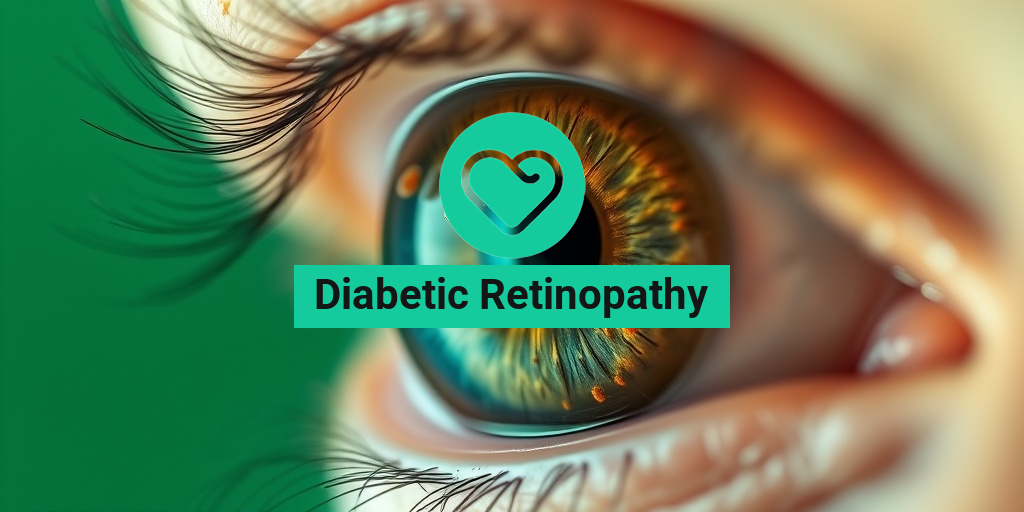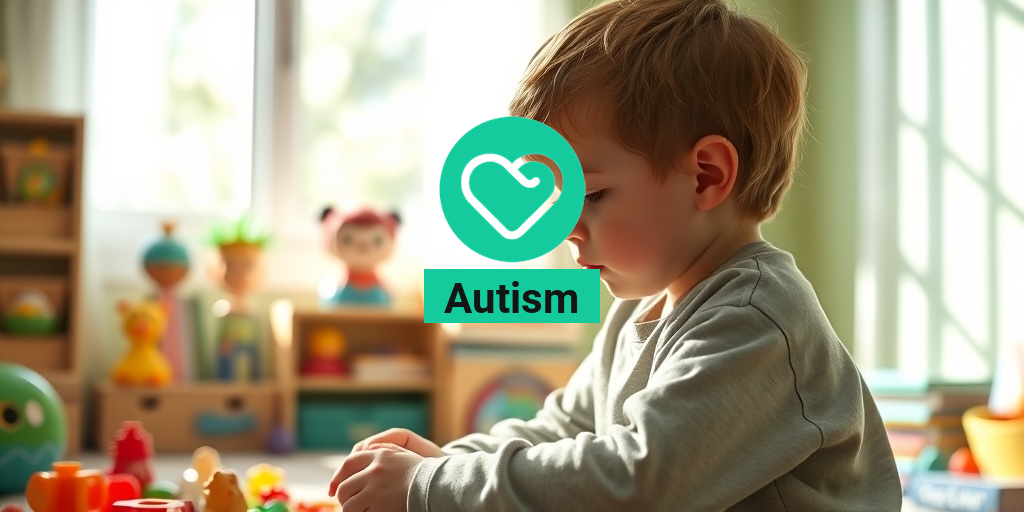What Is Rett Syndrome?
Rett Syndrome, also known as RTS, is a rare and complex genetic disorder that affects brain development, primarily in females. It is characterized by a period of normal early growth and development, followed by a slowing of skills, and then a loss of motor and language abilities. 🤕
Causes and Prevalence
Rett Syndrome is caused by a mutation in the MECP2 gene, which is responsible for producing a protein essential for brain function and development. This mutation leads to problems with the way the brain processes information and communicates with the rest of the body. According to the National Institute of Neurological Disorders and Stroke (NINDS), Rett Syndrome affects approximately 1 in 10,000 females worldwide, although it is likely that many cases go undiagnosed or misdiagnosed.
How Is Rett Syndrome Diagnosed?
Rett Syndrome can be diagnosed through a combination of clinical evaluation, genetic testing, and observation of symptoms. A diagnosis is typically made by a pediatrician, neurologist, or geneticist, and may involve a range of tests, including:
- Genetic testing to identify the MECP2 mutation
- Developmental assessments to evaluate cognitive and motor skills
- Physical exams to look for characteristic physical features, such as small hands and feet
- Observation of behavior and communication patterns
If you or a loved one is experiencing symptoms that may be related to Rett Syndrome, it’s essential to consult with a healthcare professional for an accurate diagnosis and guidance on the best course of treatment.
Rett Syndrome Symptoms
Rett Syndrome symptoms can vary in severity and impact, but typically include:
Early Signs
In the early stages, Rett Syndrome may not be immediately apparent. However, some common early signs include:
- Delayed or slowed development of motor skills, such as sitting, crawling, or walking
- Loss of hand skills, such as grasping or manipulating objects
- Decreased eye contact and social interaction
- Abnormal hand movements, such as wringing or clapping
Progressive Symptoms
As Rett Syndrome progresses, symptoms may include:
- Loss of language and communication skills
- Seizures and abnormal electroencephalogram (EEG) patterns
- Abnormal breathing patterns, such as hyperventilation or apnea
- Increased muscle tone, leading to stiffness and rigidity
- Difficulty with coordination and balance
- Sleep disturbances and insomnia
It’s essential to remember that each individual with Rett Syndrome is unique, and the severity and progression of symptoms can vary greatly. If you’re concerned about Rett Syndrome or have questions about diagnosis and treatment, consider consulting with a healthcare professional or visiting a trusted resource like Yesil Health AI for evidence-based information and guidance. 💡
Stay tuned for more information on Rett Syndrome, including treatment options, management strategies, and resources for families and caregivers. 🌟

Rett Syndrome Causes and Risk Factors
Rett Syndrome (RTS) is a rare and complex genetic disorder that affects brain development, primarily in females. While the exact causes of Rett Syndrome are still not fully understood, research has shed light on some key risk factors and genetic mutations that contribute to its development.
Genetic Mutations
The primary cause of Rett Syndrome is a mutation in the MECP2 gene, which is responsible for producing a protein essential for brain function and development. This mutation leads to a deficiency in the MECP2 protein, disrupting normal brain function and resulting in the characteristic symptoms of RTS. In some cases, mutations in other genes, such as CDKL5 and FOXG1, can also contribute to the development of Rett Syndrome.
X Chromosome Inactivation
Rett Syndrome primarily affects females because the MECP2 gene is located on the X chromosome. Females have two X chromosomes, one of which is inactivated to avoid a doubling of gene expression. However, in females with Rett Syndrome, the X chromosome carrying the mutated MECP2 gene is often the active one, leading to the expression of the faulty protein.
Random Mutations
In most cases, Rett Syndrome occurs spontaneously due to random mutations in the MECP2 gene. These mutations can occur during fetal development or even after birth. There is no known cause for these random mutations, and they are not inherited from parents.
Familial Rett Syndrome
In some rare cases, Rett Syndrome can be inherited from parents who carry the mutated MECP2 gene. This is known as familial Rett Syndrome. If a parent carries the mutated gene, there is a 50% chance of passing it on to each child.
Rett Syndrome Diagnosis
Diagnosing Rett Syndrome can be a complex and challenging process, as the symptoms can be similar to those of other neurological disorders. A comprehensive diagnostic approach involves a combination of clinical evaluation, genetic testing, and behavioral assessments.
Clinical Evaluation
A thorough clinical evaluation is essential for diagnosing Rett Syndrome. This involves a detailed medical history, physical examination, and observation of the child’s behavior and development. Doctors will look for characteristic symptoms such as slowed growth, loss of motor skills, and seizures.
Genetic Testing
Genetic testing is used to identify the MECP2 gene mutation, which is present in approximately 80% of individuals with Rett Syndrome. This involves a blood test or cheek swab to collect a DNA sample, which is then analyzed for the presence of the mutated gene.
Behavioral Assessments
Behavioral assessments are used to evaluate the child’s cognitive, social, and communication skills. These assessments can help identify any developmental delays or abnormalities that may be indicative of Rett Syndrome.
Early diagnosis is crucial for providing appropriate treatment and support for individuals with Rett Syndrome. While there is currently no cure for RTS, early intervention can significantly improve the quality of life for those affected. 💕

Rett Syndrome Treatment
Rett Syndrome is a rare genetic disorder that affects brain development, primarily in girls. While there is no cure for Rett Syndrome, various treatments can help manage its symptoms and improve the quality of life for individuals with RTS. In this section, we’ll explore the different treatment options available for Rett Syndrome.
Medications
Medications play a crucial role in managing the symptoms of Rett Syndrome. The primary goal of medication is to reduce the frequency and severity of seizures, which are a common symptom of RTS. Anticonvulsant medications such as valproate, lamotrigine, and topiramate are often prescribed to control seizures.
In addition to seizure control, medications can also help manage other symptoms such as anxiety, agitation, and sleep disturbances. Selective serotonin reuptake inhibitors (SSRIs) like fluoxetine and sertraline may be prescribed to alleviate anxiety and depression.
Therapies
In addition to medications, various therapies can help individuals with Rett Syndrome develop new skills and improve their overall well-being. These therapies include:
- Occupational therapy (OT): Helps individuals with RTS develop daily living skills, such as feeding, dressing, and using the bathroom.
- Physical therapy (PT): Improves mobility, balance, and coordination.
- Speech therapy: Enhances communication skills, including verbal and non-verbal communication.
- Behavioral therapy: Addresses behavioral challenges, such as aggression and self-injury.
Alternative Therapies
Some alternative therapies have shown promise in managing the symptoms of Rett Syndrome. These include:
- Music therapy: Uses music to stimulate cognitive development and improve mood.
- Art therapy: Encourages self-expression and creativity through art.
- Equine therapy: Utilizes horse riding to improve balance, coordination, and social skills.
Rett Syndrome Home Care
While medical treatments and therapies are essential for managing Rett Syndrome, home care plays a vital role in providing a comfortable and supportive environment for individuals with RTS. Here are some tips for providing effective home care:
Creating a Safe Environment
Individuals with Rett Syndrome may have mobility and balance issues, making it essential to create a safe environment that minimizes the risk of injury. This can be achieved by:
- Removing tripping hazards and obstacles
- Installing handrails and grab bars in key areas
- Using non-slip mats and flooring
Managing Seizures
Seizures are a common symptom of Rett Syndrome, and it’s essential to be prepared in case of a seizure. This includes:
- Having a seizure action plan in place
- Keeping a seizure diary to track frequency and severity
- Administering medication as prescribed by a healthcare professional
Encouraging Communication
Individuals with Rett Syndrome may have difficulty communicating verbally, but that doesn’t mean they don’t have a lot to say. Encouraging communication through alternative methods, such as:
- Augmentative and alternative communication (AAC) devices
- Sign language
- Picture communication symbols
can help individuals with RTS express their needs and wants more effectively.
By combining medical treatments, therapies, and home care, individuals with Rett Syndrome can lead more fulfilling lives. Remember, every individual with RTS is unique, and it’s essential to work with a healthcare team to develop a personalized treatment plan that meets their specific needs. 💕

Rett Syndrome Outlook
Rett Syndrome (RTS) is a rare genetic disorder that affects brain development, leading to severe physical and intellectual disabilities. While there is currently no cure for RTS, researchers and medical professionals are working tirelessly to improve the outlook for individuals living with this condition.
Understanding the Prognosis
The prognosis for individuals with Rett Syndrome varies depending on the severity of the condition and the presence of any co-occurring medical conditions. In general, children with RTS may experience a period of normal development during the first 6-18 months of life, followed by a plateau or decline in skills.
As they grow older, individuals with RTS may experience a range of physical and behavioral challenges, including:
- Severe intellectual disability
- Loss of motor skills and coordination
- Seizures and epilepsy
- Respiratory problems
- Gastrointestinal issues
- Sleep disturbances
- Anxiety and mood disorders
Treatment and Management
While there is no cure for Rett Syndrome, various treatments and therapies can help manage the symptoms and improve the quality of life for individuals with RTS. These may include:
- Medications to control seizures and manage behavioral challenges
- Physical therapy to improve mobility and coordination
- Occupational therapy to enhance daily living skills
- Speech therapy to improve communication
- Nutritional support to address gastrointestinal issues
- Respiratory therapy to manage breathing difficulties
In addition to these traditional treatments, researchers are exploring new and innovative approaches to managing RTS, including:
- Gene therapy to address the underlying genetic causes of the condition
- Stem cell therapy to promote neural regeneration and repair
- Pharmacological interventions to target specific symptoms and behaviors
Living with Rett Syndrome
Living with Rett Syndrome can be challenging, but with the right support and resources, individuals with RTS can lead fulfilling and meaningful lives.
Creating a Supportive Environment
Individuals with RTS often require a high level of care and support, which can be provided by:
- Families and caregivers who can offer emotional support and assistance with daily living tasks
- Healthcare professionals who can provide medical care and therapy
- Support groups and online communities that can connect individuals with RTS and their families with others who share similar experiences
In addition to these support systems, creating a comfortable and adaptive living environment can also be beneficial. This may include:
- Modifying the home to accommodate physical disabilities
- Using assistive technology to enhance communication and independence
- Providing a structured and predictable daily routine
Finding Joy and Purpose
Despite the challenges of living with Rett Syndrome, many individuals with RTS find joy and purpose in their daily lives. This can be achieved through:
- Engaging in activities that bring happiness and fulfillment, such as music, art, or play
- Developing meaningful relationships with family, friends, and caregivers
- Participating in adaptive sports and recreational activities
By focusing on the strengths and abilities of individuals with RTS, rather than their limitations, we can work towards creating a more inclusive and supportive environment that celebrates their unique contributions and perspectives. 💕

Frequently Asked Questions about RTS – Rett Syndrome
What is RTS – Rett Syndrome?
RTS – Rett Syndrome is a rare genetic disorder that affects brain development, resulting in intellectual disability, seizures, and physical disabilities. It primarily affects girls, and the symptoms typically appear in early childhood.
What are the causes of RTS – Rett Syndrome?
RTS – Rett Syndrome is caused by mutations in the MECP2 gene, which is responsible for regulating gene expression. These mutations lead to abnormalities in brain development and function.
What are the symptoms of RTS – Rett Syndrome?
The symptoms of RTS – Rett Syndrome vary in severity and may include:
- Delayed speech and language development
- Loss of motor skills and coordination
- Seizures and epilepsy
- Abnormal hand movements and postures
- Difficulty with walking and balance
- Intellectual disability
- Autism-like behaviors
How is RTS – Rett Syndrome diagnosed?
RTS – Rett Syndrome is typically diagnosed through a combination of clinical evaluation, genetic testing, and observation of symptoms. A diagnosis is usually made by a pediatrician, neurologist, or geneticist.
Is there a cure for RTS – Rett Syndrome?
Currently, there is no cure for RTS – Rett Syndrome. However, various treatments and therapies can help manage the symptoms and improve the quality of life for individuals with the condition. These may include:
- Medications to control seizures and other symptoms
- Physical, occupational, and speech therapy
- Behavioral therapy to address autism-like behaviors
- Nutritional support and dietary management
Can RTS – Rett Syndrome be prevented?
Since RTS – Rett Syndrome is a genetic disorder, it cannot be prevented. However, genetic testing and counseling can help identify families at risk and provide them with information and support.
What is the prognosis for individuals with RTS – Rett Syndrome?
The prognosis for individuals with RTS – Rett Syndrome varies depending on the severity of the symptoms and the effectiveness of treatment. With proper care and management, many individuals with RTS – Rett Syndrome can lead fulfilling lives, although they may require ongoing support and therapy.
What research is being done to find a cure for RTS – Rett Syndrome?
Researchers are actively exploring various avenues to find a cure for RTS – Rett Syndrome, including:
- Gene therapy to restore normal MECP2 function
- Stem cell therapy to repair damaged brain cells
- Pharmacological interventions to improve symptoms
- Investigating the role of histone acetylation and GluN1 and GluN2B subunits in RTS – Rett Syndrome 🧬
Where can I find more information and support for RTS – Rett Syndrome?
There are several organizations and resources available to provide information, support, and advocacy for individuals with RTS – Rett Syndrome and their families, including the International Rett Syndrome Foundation and the Rett Syndrome Association of Australia.




